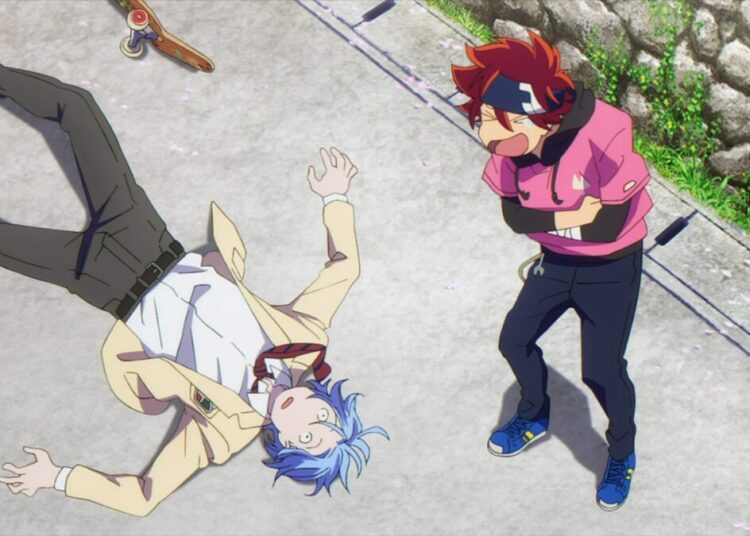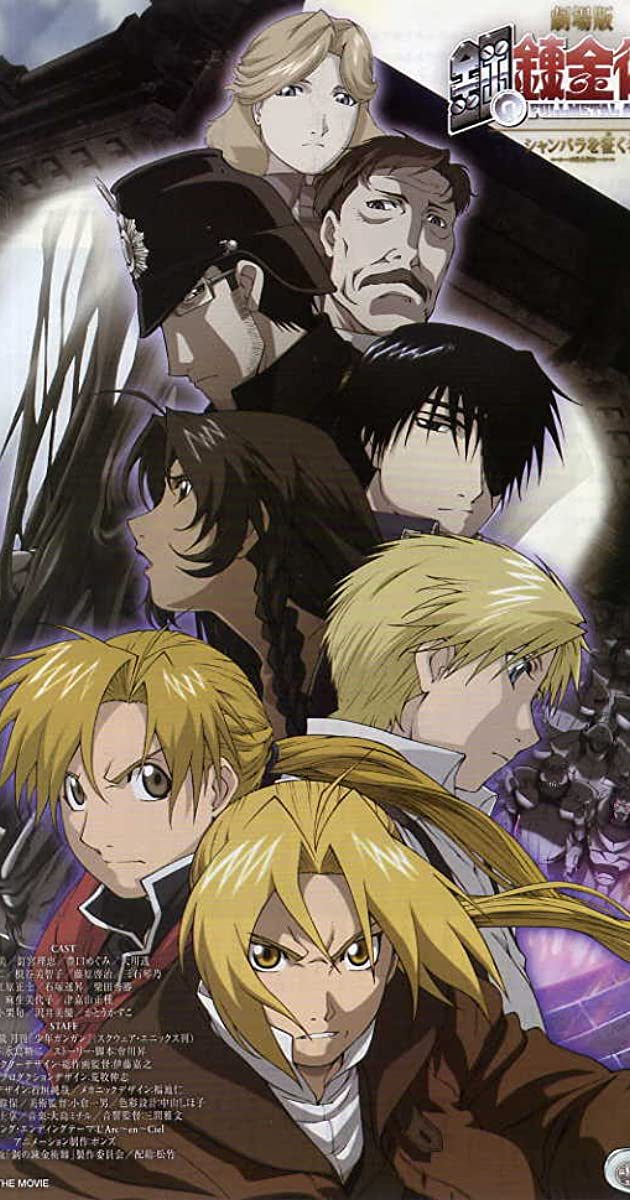
Hiromu Arakawa’s Fullmetal Alchemist needs little introduction. The now-classic manga and anime franchise is often remembered as being an introduction to otaku-dom for many Westerners, whether with the first adaptation (2003-04) or Brotherhood (2009-10). One of the lesser-known entries, however, would be: Fullmetal Alchemist: The Conqueror of Shamballa (2005): an OVA film that serves as a fascinating, yet bombastic sendoff to the original series.
Animated by Studio Bones and director Seiji Mizushima, its 1:45 hour runtime is anything but dull. Though fans of the saga may find the end result either off-putting or jarring compared to the source material, it’s nonetheless a rather unique experience that’s worth putting on your list.
The American trailer for the film does well to highlight its unique touches, while showing continuity with the original anime adaptation, complete with a taste of the soundtrack. (Source: YouTube)
Babylon Bavaria
Taking place about two years after the events of the 2003 show, The Conqueror of Shamballa starts off with Edward (Romi Park, Vic Mignogna) and Alphonse Elric (Rie Kugimiya, Aaron Dismuke) on their quest for the Philosopher’s Stone, as they stop a mad scientist from unleashing an experimental bomb. This is revealed to be a flashback, however, as in reality, Ed has been trapped in a dimension where alchemy doesn’t work: more specifically, Munich, Germany in 1923. After a chance encounter with a Roma girl named Noah (Miyuu Sawai, Leah Clark), he soon finds himself in a conspiracy involving the nascent Nazis and the enigmatic Thule Society, led by Dietlinde Eckart (Kazuko Kato, Kelly Manison). Back in Amestris, meanwhile, a partly-amnesiac Al continues looking for a way to bring his brother back. Their paths once more connect as two worlds become intertwined.
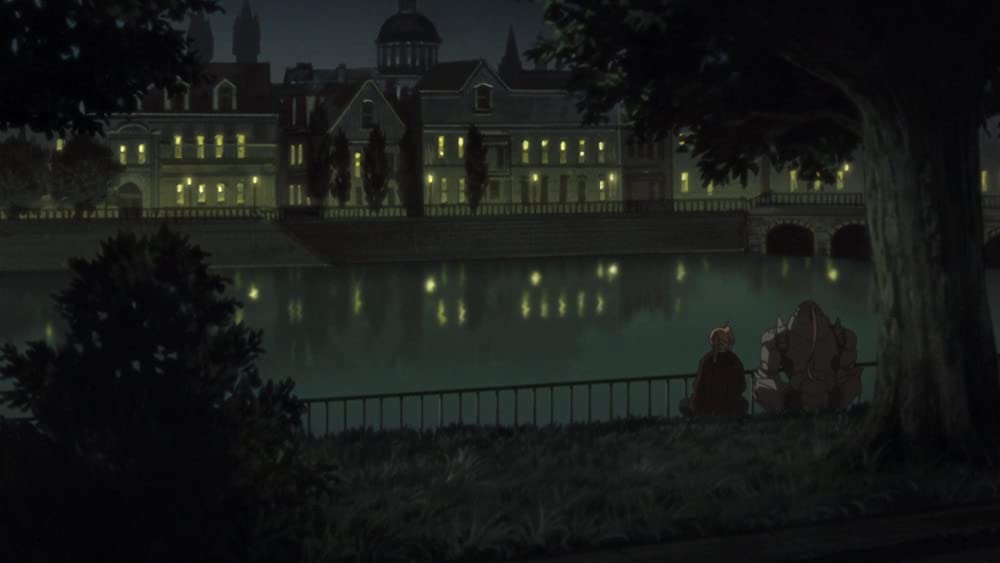
As with the original anime adaptation, the OVA was made before the manga itself was completed, resulting in a different continuity, albeit one made with the approval of Arakawa herself. The reveal that Earth is what’s at the “other side” is just the tip of the iceberg in terms of divergences. Over the course of the story, Ed meets alternate versions of living and dead characters, including a dead-ringer for Maes Hughes (Keiji Fujiwara, Sonny Strait) serving as a German police officer. Meanwhile, the fates of some characters across the Gate can seem underwhelming, whether it’s Izumi Curtis dying off-screen or Roy Mustang (Tôru Ohkawa, Travis Willingham) having his arc being a bit abrupt.
That isn’t to say that the shift is bad. From the way the infamous Munich Beer Hall Putsch is incorporated into the story, to the disgruntled, impoverished atmosphere, and even how the Roma are discriminated against as thieving gypsies, the backdrop of the 1920s Weimar Republic is portrayed with remarkable accuracy. These happen alongside historical cameos featuring the likes of Fritz Lang, resulting in the Earth scenes having a tone that’s reminiscent of Raiders of the Lost Ark (1981). The unflinching portrayal of the less politically correct aspects of the era, along with the ominous foreshadowing of the Nazis’ rise to power, is also reminiscent of the German series Babylon Berlin (2017–Present), while still being consistent with the serious elements of the original anime.
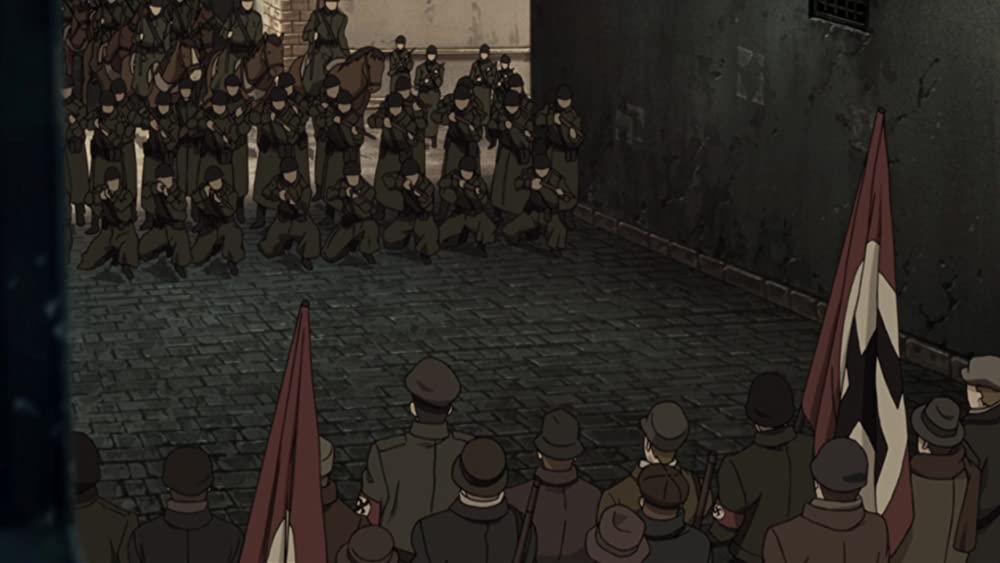
Speaking of which, the film does a decent job of wrapping up loose ends. Even with the Bavarian excursions, the plot still gives ample time for Amestris and its inhabitants to shine. Familiar faces like Winry Rockbell (Megumi Toyoguchi, Caitlin Glass) and Wrath (Nana Mizuki, Luci Christian) have a sense of closure, while having their fair share of screentime. Ed and Al continue their character development from the show, coming to terms with their predicaments while still clinging to their convictions. This does require some knowledge of the 2003 series rather than the manga to appreciate fully. While some of the “new” cast, such as Alfons Heidrich (Rie Kugimiya, Aaron Dismuke), aren’t quite as memorable, or in the case of Noah, more of a load than likable. Nonetheless, you could tell that effort was made to send the anime off on a high, if bittersweet note.
This extends to the presentation itself.
More than Equivalent Exchange
The original 2003 adaptation of Fullmetal Alchemist wasn’t lacking in good visuals or spectacle. The same could be said of The Conqueror of Shamballa, which takes those up a notch with Studio Bones’ added budget.
https://www.youtube.com/watch?v=iWFbTTD-UvM
Alphonse Elric’s (re)introduction showcases both Amestris’ vibrance and how well the animation holds up. (Source: YouTube)
Beyond the sheer attention to detail to what’s on-screen, be it period-specific firearms or otherwise anachronistic prototype rocket planes, you could tell that the research done by the animators on Weimar Germany isn’t just in atmosphere. A lot of effort was put into bringing 1920s Munich to vivid life, down to the pre-World War 2 architecture and even the film studio compound where Fritz Lang filmed Die Nibelungen (1924). Meanwhile, the comparatively subtle decision to frame the Earth scenes in much more muted and realistic colors succeeds in contrasting the differences between worlds effectively, in contrast to the visually vibrant Amestris. Though some of the CGI used hasn’t quite aged well (especially the Thule Society’s armored soldiers), overall, the quality holds up well even when in motion, with fluid action sequences and much in the way of explosions and alchemy effects.
Then, there’s the audio. The voice acting, done for the most part by the same cast as in the original series, is consistently solid, whether it’s the Japanese or English dub. These are further complemented by the soundtrack, which was largely performed by the Moscow Orchestra, with L’Arc-en-Ciel providing the opening and ending themes. On top of what’s carried over from the original anime, you have Romani folk music, bombastic flourishes, and somber melodies combined to give the film a unique sensory flair that, though not always memorable, still blends well with what’s shown.
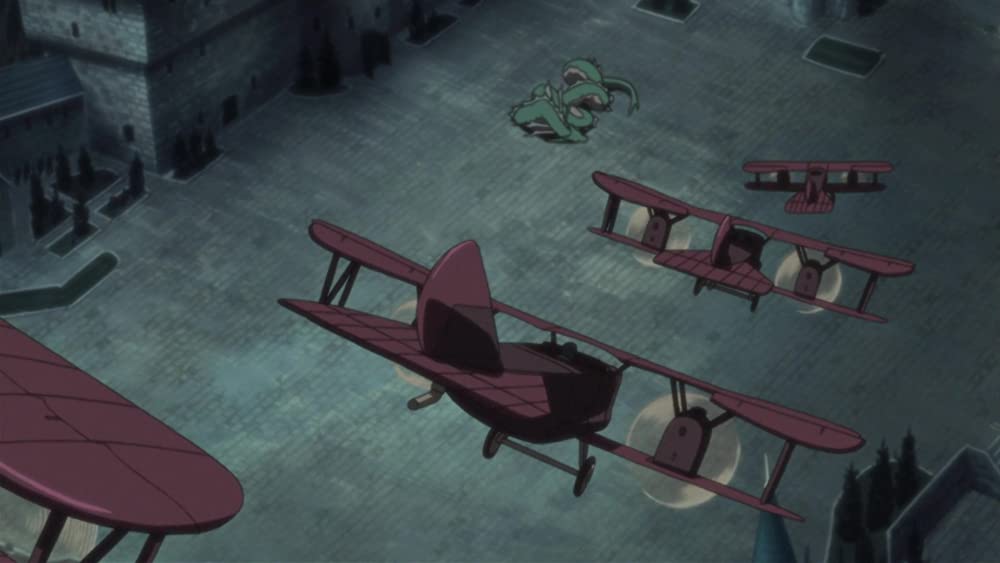
To say that the effort put in paid off would be an understatement. The Conqueror of Shamballa went on to become the seventh most popular anime film in Japan in 2005, while grossing over $10 Million overseas in the box office that same year. On top of several critical accolades, including “Animation of the Year”, “Best Original Story,” and “Best Music” in the 2006 Tokyo Anime Fair, it received almost universally positive praise from critics. Reception among fans of the franchise, however, was a bit more mixed in general, be it due to the story’s ending, the divergences from the manga, or the decision to reveal Earth as the “other side.” The reveal that the script had to be cut down from its original draft to meet the runtime, which involved more characters and could have expounded on the plot more, has also opened speculation as to what might have been.
All the same, though the film may have been overshadowed by what came after, most notably, Brotherhood, it’s by no means a lesser work. Whether you’re a fan of the earlier adaptations or a relative newcomer, it’s still worth finding a copy and savoring a different take on a classic saga.


